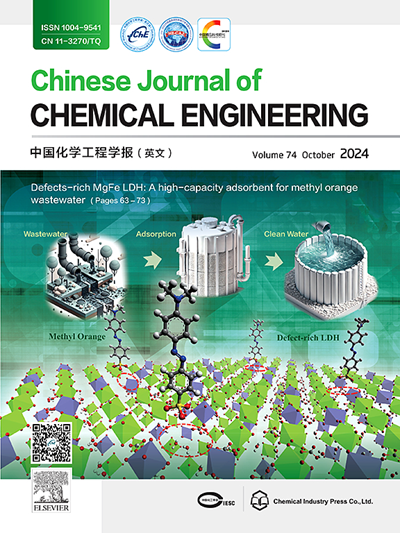Design and control of an extractive distillation process for separating isopropanol and water with side-stream extraction
IF 3.7
3区 工程技术
Q2 ENGINEERING, CHEMICAL
引用次数: 0
Abstract
Innovating distillation technology to improve the efficiency of distillation equipment, reduce energy consumption, and increase product purity is an important challenge for the rapid development of the distillation industry. In this paper, steady-state simulations are developed for the separated isopropanol and water systems, and the sensitive temperature stage locations are determined using sensitivity and singular value decomposition (SVD). An open-loop steady-state gain analysis of the isopropanol/water system was performed, and a series of dynamic control schemes were designed and optimized to resist ±10% feed flow disturbances and ±5% feed composition disturbances, comparing the performance of the control schemes one by one through IAE error analysis. The results show that the side-stream extractive distillation separation of isopropanol and water system using a single temperature fixed reflux ratio control loop suffers from a large product shift problem. One of the key control loops is to control the isopropanol purity by controlling the bottom of the column flow rate, and the scheme performs well under both single-temperature control and dual-temperature control, effectively resisting ±10% feed flow disturbances and ±5% feed composition disturbances. The improvement of product purity can be seen from the component controllers play an important role, while the feed-forward effect under certain conditions can also enable the system to quickly restore stability and improve the system response speed.
求助全文
约1分钟内获得全文
求助全文
来源期刊

Chinese Journal of Chemical Engineering
工程技术-工程:化工
CiteScore
6.60
自引率
5.30%
发文量
4309
审稿时长
31 days
期刊介绍:
The Chinese Journal of Chemical Engineering (Monthly, started in 1982) is the official journal of the Chemical Industry and Engineering Society of China and published by the Chemical Industry Press Co. Ltd. The aim of the journal is to develop the international exchange of scientific and technical information in the field of chemical engineering. It publishes original research papers that cover the major advancements and achievements in chemical engineering in China as well as some articles from overseas contributors.
The topics of journal include chemical engineering, chemical technology, biochemical engineering, energy and environmental engineering and other relevant fields. Papers are published on the basis of their relevance to theoretical research, practical application or potential uses in the industry as Research Papers, Communications, Reviews and Perspectives. Prominent domestic and overseas chemical experts and scholars have been invited to form an International Advisory Board and the Editorial Committee. It enjoys recognition among Chinese academia and industry as a reliable source of information of what is going on in chemical engineering research, both domestic and abroad.
 求助内容:
求助内容: 应助结果提醒方式:
应助结果提醒方式:


